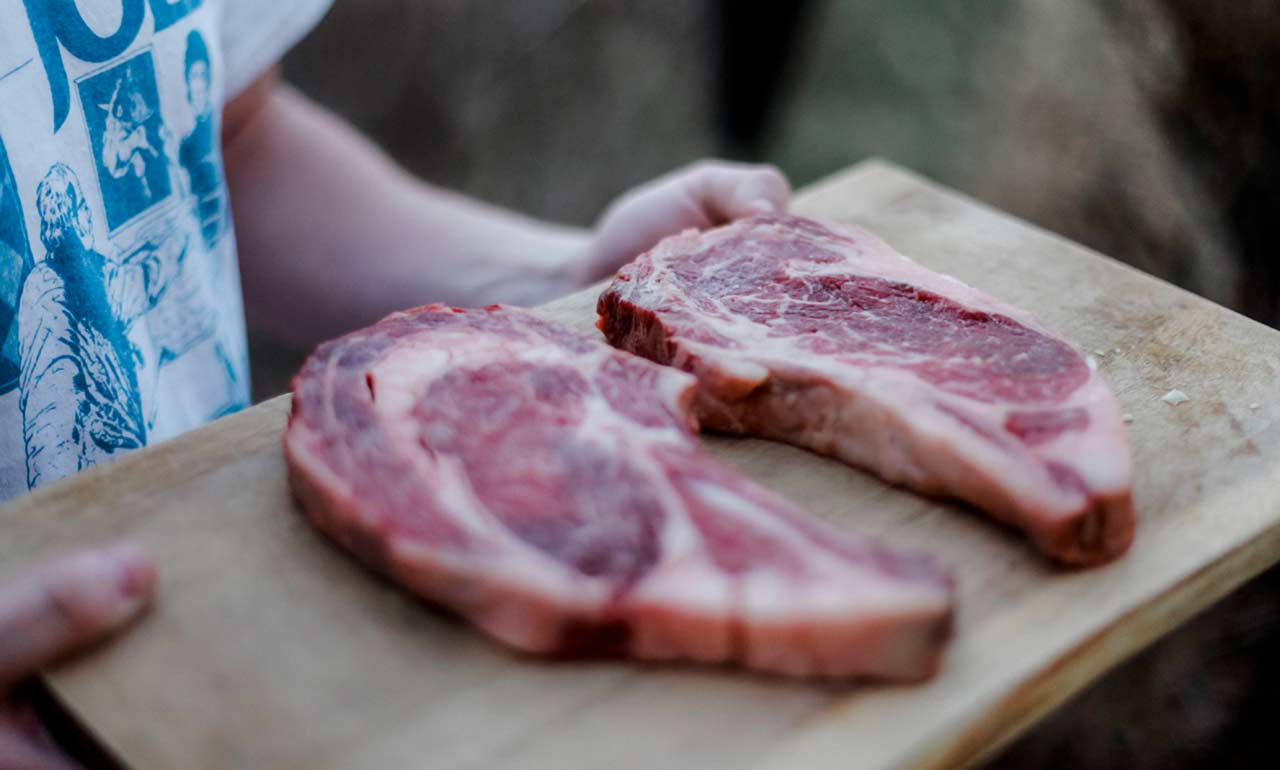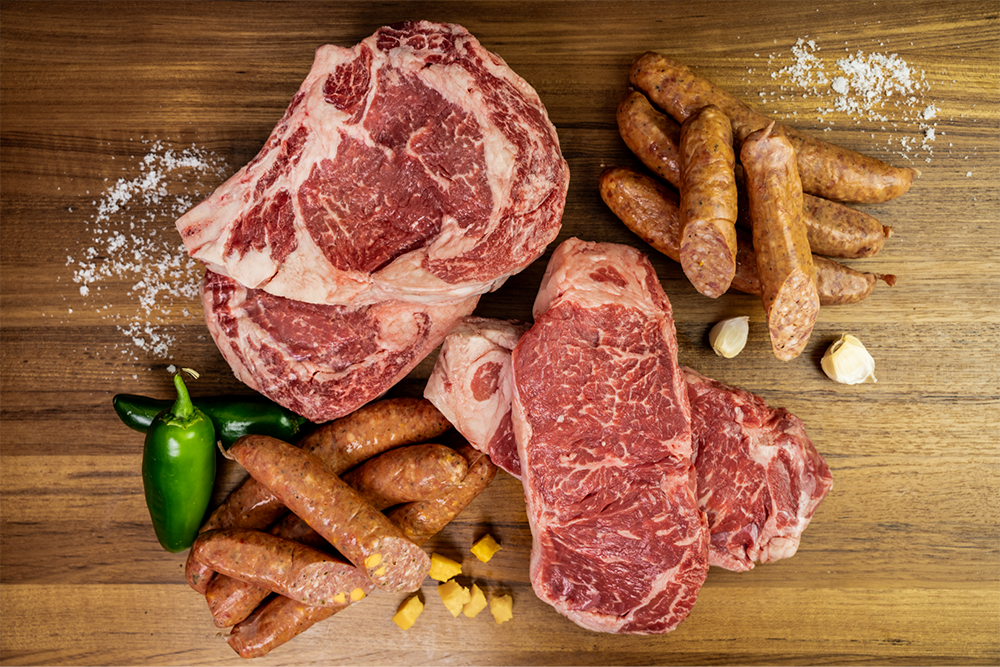Leading Reasons to Patronize Bagley Farms Meat Market Edwardsville IL for Costs Meats
Leading Reasons to Patronize Bagley Farms Meat Market Edwardsville IL for Costs Meats
Blog Article
Uncover the Art of the Butcher's Cut in a Modern Meat Market
In the ever-evolving landscape of modern meat markets, the butcher's cut has actually transcended its traditional roots, merging old-time craftsmanship with modern techniques. bagley farms meat market edwardsville il. Today's butchers are not simply cpus of meat; they are knowledgeable artisans that highlight sustainability and moral sourcing. Their expertise in picking and preparing cuts tailored to particular culinary demands supplies an exceptional eating experience. What genuinely establishes the modern butcher apart is their capability to create a much deeper connection in between customers and the beginnings of their meat. How do these masters equilibrium tradition with development, and what ramifications does this have for the future of meat intake?
Development of Butchery Strategies

The mid-20th century saw butchery strategies additionally refined by scientific understandings into muscular tissue biology and meat aging, enhancing both tenderness and preference. Advancements like vacuum packaging and refrigeration extended product shelf-life, allowing butchers to branch out offerings and improve quality assurance. This period additionally marked the increase of customized tools, such as band saws and meat slicers, which increased accuracy and efficiency in meat handling.
The 21st century has introduced electronic innovation right into the butchery realm. Computerized systems currently aid in monitoring animal provenance and enhancing cuts to satisfy particular client preferences. In addition, a resurgence in artisanal butchery has actually emerged, blending conventional skills with contemporary expertise to deal with customers seeking moral and sustainable meat alternatives. This development underscores a vibrant interplay in between tradition and innovation, conference contemporary needs while protecting the craft's heritage.

Recognizing Meat Cuts

Understanding the ins and outs of meat cuts is crucial for both butchers and customers looking for top quality and worth. For butchers, accurate cuts mirror skill and regard for the craft, guaranteeing marginal waste and optimum return.
The key groups of meat cuts include primal, sub-primal, and retail cuts. Primitive cuts, such as the loin, rib, and chuck, are the large sections initially divided from the carcass. Butchers after that break these down even more right into sub-primal cuts, before lastly generating retail cuts available to customers, like ribeye or tenderloin. Each stage requires mindful attention to physiological structure and muscular tissue structure.
Recognizing muscle make-up is critical; muscular tissues made link use of a lot more regularly by the pet have a tendency to be tougher and are best suited for sluggish cooking methods, while less-used muscle mass, like those located in the loin, are more tender and perfect for grilling or roasting. Familiarity with these distinctions equips customers to make educated selections, boosting their cooking endeavors.
Picking Quality Meat
Choosing the appropriate meat includes greater than simply choosing an aesthetically appealing item from the display. The art of picking quality meat requires a critical eye and expertise of details attributes that symbolize freshness and excellence. First of all, take note of the color; beef needs to have an intense, cherry-red hue, while lamb must exhibit a soft pink tone, and pork a light pink. This suggests the meat is fresh and hasn't been exposed to oxygen for too long.
Secondly, take into consideration the marbling, which describes the white flecks of fat within the muscle mass. Appropriate marbling is a key sign of inflammation and flavor, as it melts throughout cooking, improving the meat's juiciness. Bear in mind, higher marbling frequently associates with premium high quality cuts, such as USDA Prime.
Texture is an additional important variable; meat ought to feel browse around these guys firm to the touch, not slimy or excessively soft. Additionally, be conscious of the scent. Fresh meat should have a clean, neutral odor, complimentary from any sour or off-putting smells.
Coupling Cuts With Food Preparation Methods
Successfully pairing cuts of meat with the suitable food preparation approaches is essential for attaining optimum flavor and texture. These approaches boost the meat's all-natural tastes and guarantee a juicy surface.
Conversely, harder cuts like brisket and chuck roast are abundant in collagen, which damages down into jelly when prepared gradually. These cuts are ideal for braising or slow roasting, allowing the meat to tenderize in time and create deep, complicated flavors. Likewise, cuts such as short ribs and pork shoulder make out well with slow-cooking methods, where extended cooking times change their robust structures right into succulent dishes.
Lamb shanks and oxtail, which call for long term cooking to tenderize, are best prospects for cooking or sluggish simmering. These methods coax out rich, passionate flavors while maintaining dampness. By recognizing the distinct attributes of each cut, chefs and home chefs alike can boost their culinary productions, making certain each meal is both satisfying and remarkable.
The Butcher's Function Today
Navigating the progressing landscape of the contemporary meat market, the butcher's function today prolongs beyond plain prep work of cuts. Contemporary butchers are culinary craftsmens, educators, and supporters for lasting practices.
Along with crafting specific cuts, butchers currently engage directly with consumers, supplying cooking guidance and customizing options to match specific needs and choices. Their knowledge in meat aging, marbling, and taste profiles equips customers to make educated decisions, boosting their culinary experiences. This individualized solution exhibits the butcher's developing role as a relied on expert in the cooking area.
Moreover, news butchers are critical in lessening waste, using whole pets to develop diverse items such as sausages and supplies - bagley farms meat market edwardsville il. This detailed method not just values the animal but additionally straightens with contemporary sustainability objectives. This way, the contemporary butcher embodies both practice and innovation, adjusting to an ever-changing market while preserving the creativity and integrity of their craft

Final Thought
The contemporary butcher's craft delicately weaves typical methods with modern-day innovations, highlighting lasting practices and moral sourcing. Proficiency in comprehending diverse meat cuts and quality indicators empowers butchers to offer enlightened recommendations, straightening details cuts with optimal cooking techniques. This proficiency not just raises culinary experiences but also strengthens the connection in between customers and the beginnings of their food. By honoring historical methods while accepting modern demands, the butcher's duty stays important in today's innovative meat market.
Report this page